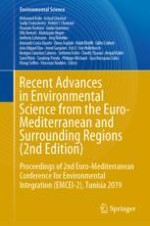2021 | OriginalPaper | Chapter
Hazardous Materials Prediction Using an Artificial Neural Network and Meteorological FASDAS Data Assimilation
Authors : Hosni Snoun, Hatem Kanfoudi, Ghazi Bellakhal, Jamel Chahed
Published in: Recent Advances in Environmental Science from the Euro-Mediterranean and Surrounding Regions (2nd Edition)
Publisher: Springer International Publishing
Activate our intelligent search to find suitable subject content or patents.
Select sections of text to find matching patents with Artificial Intelligence. powered by
Select sections of text to find additional relevant content using AI-assisted search. powered by
